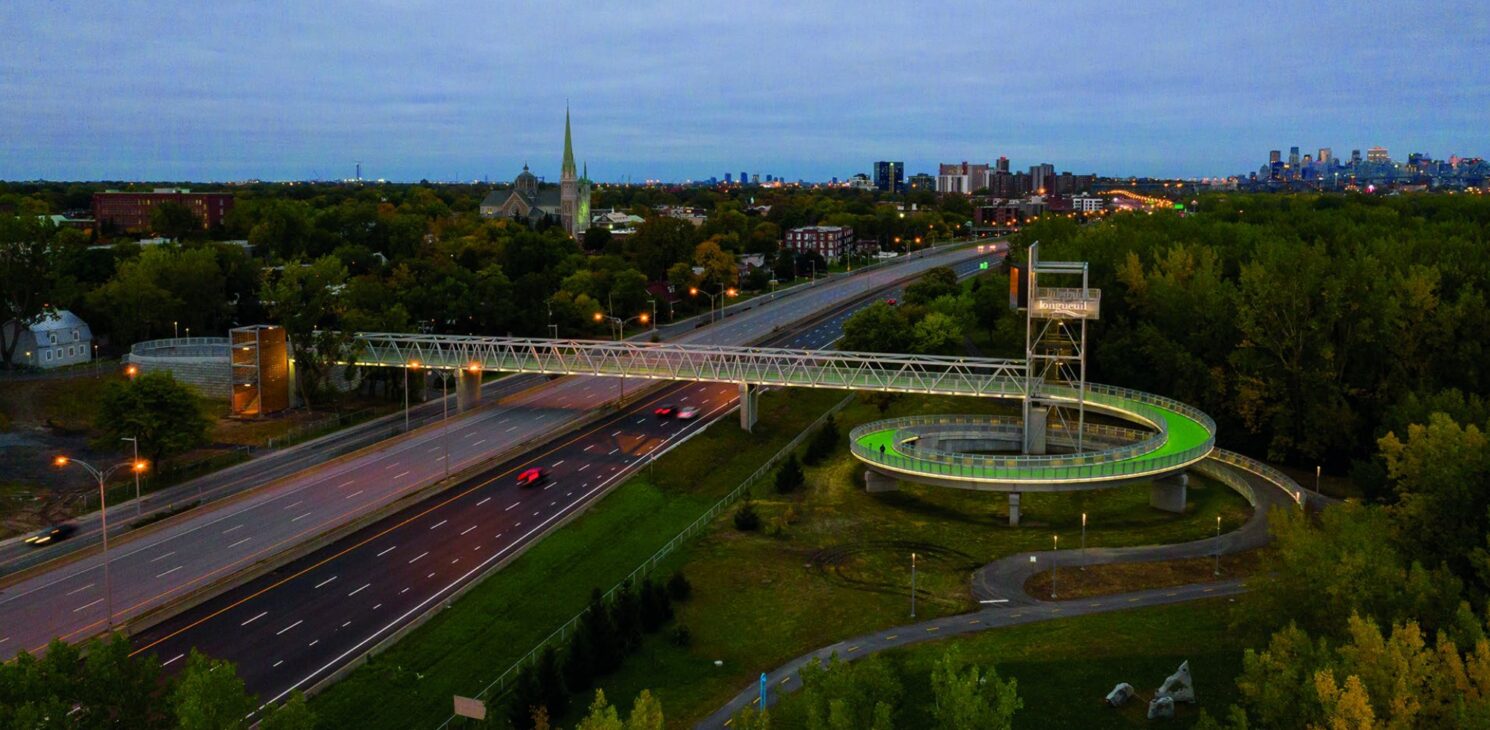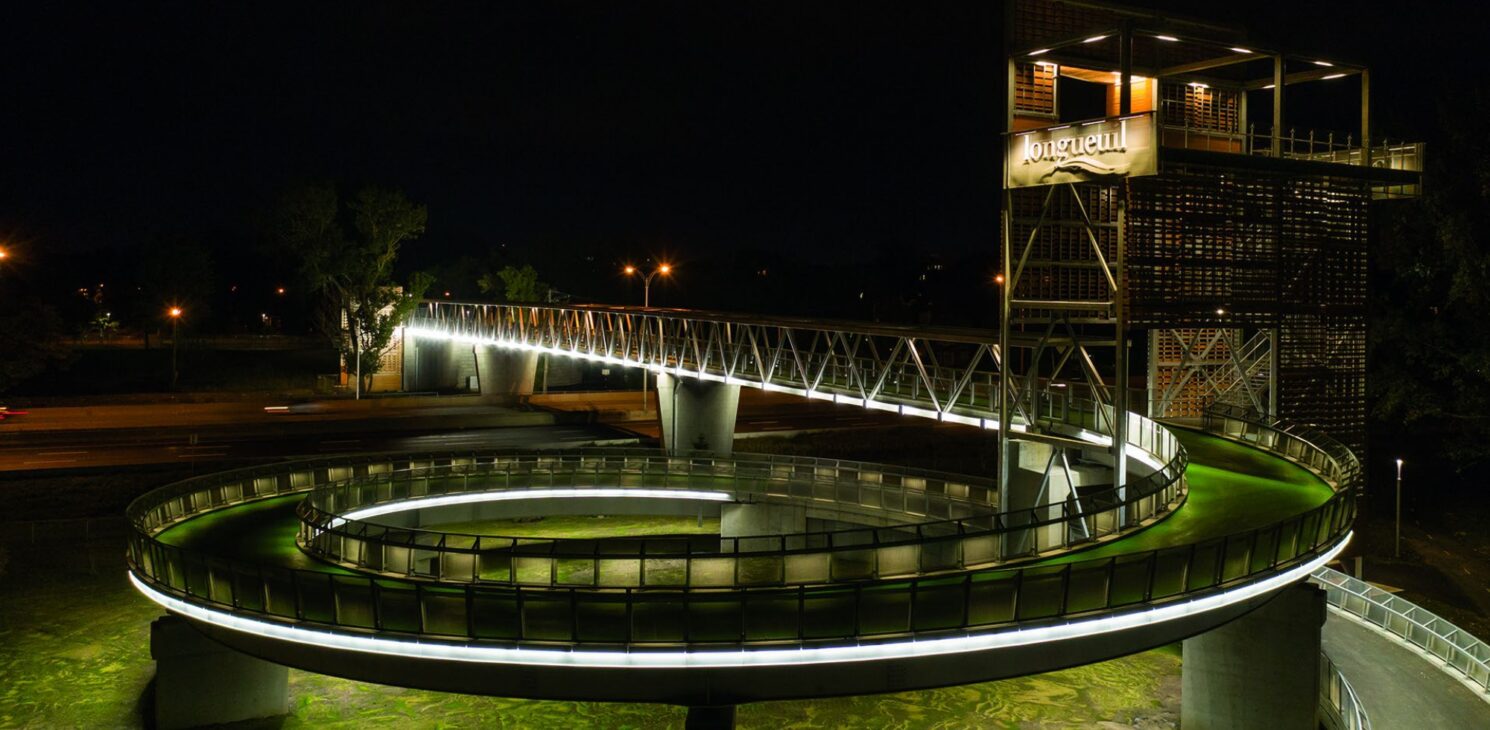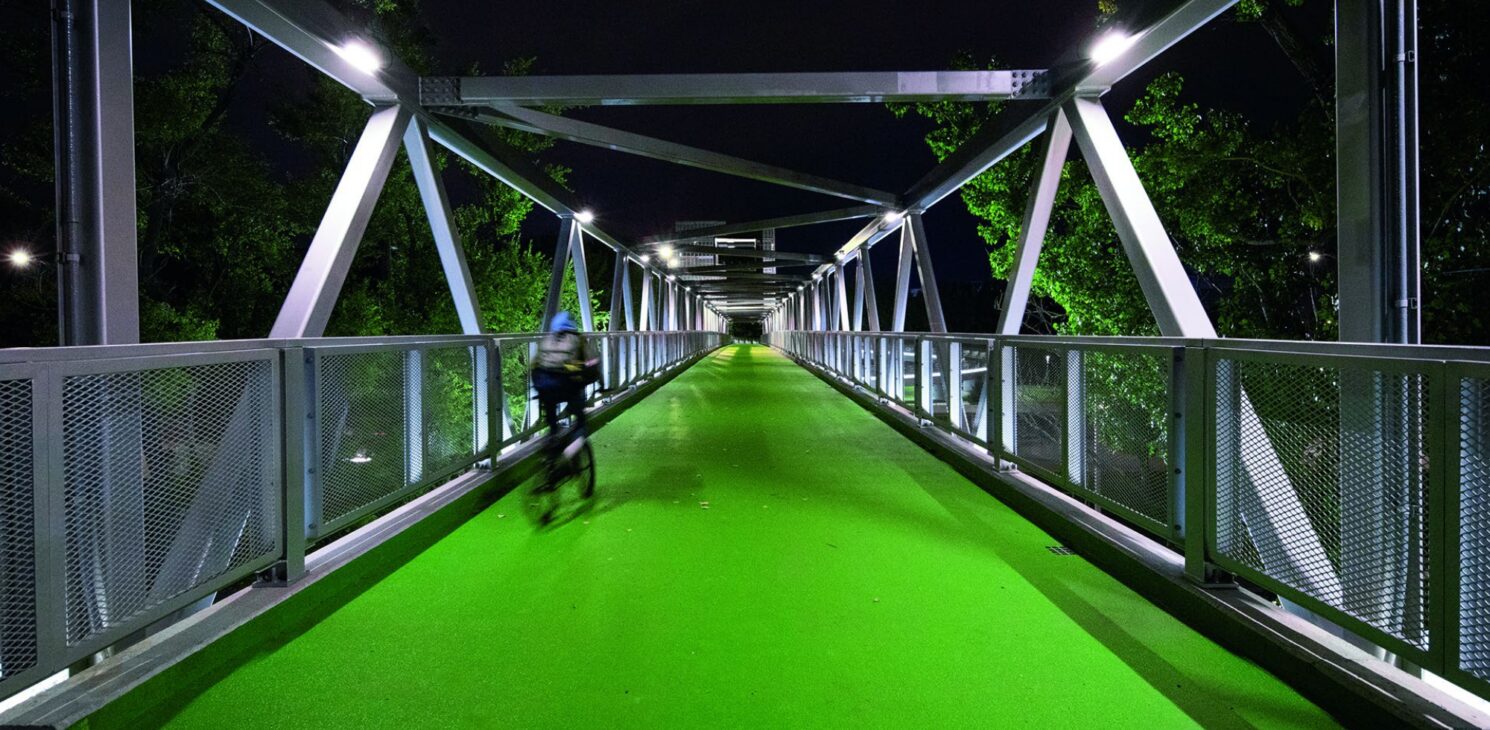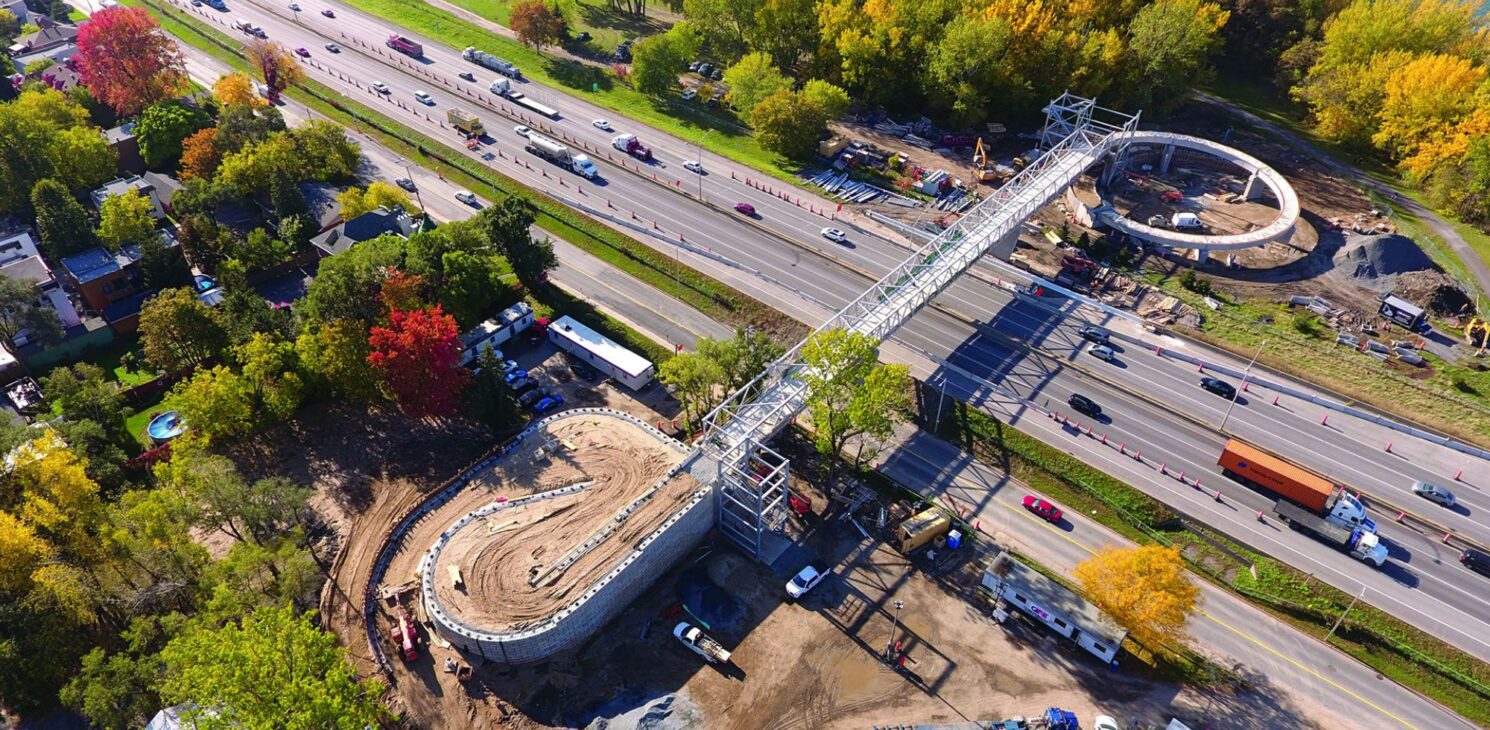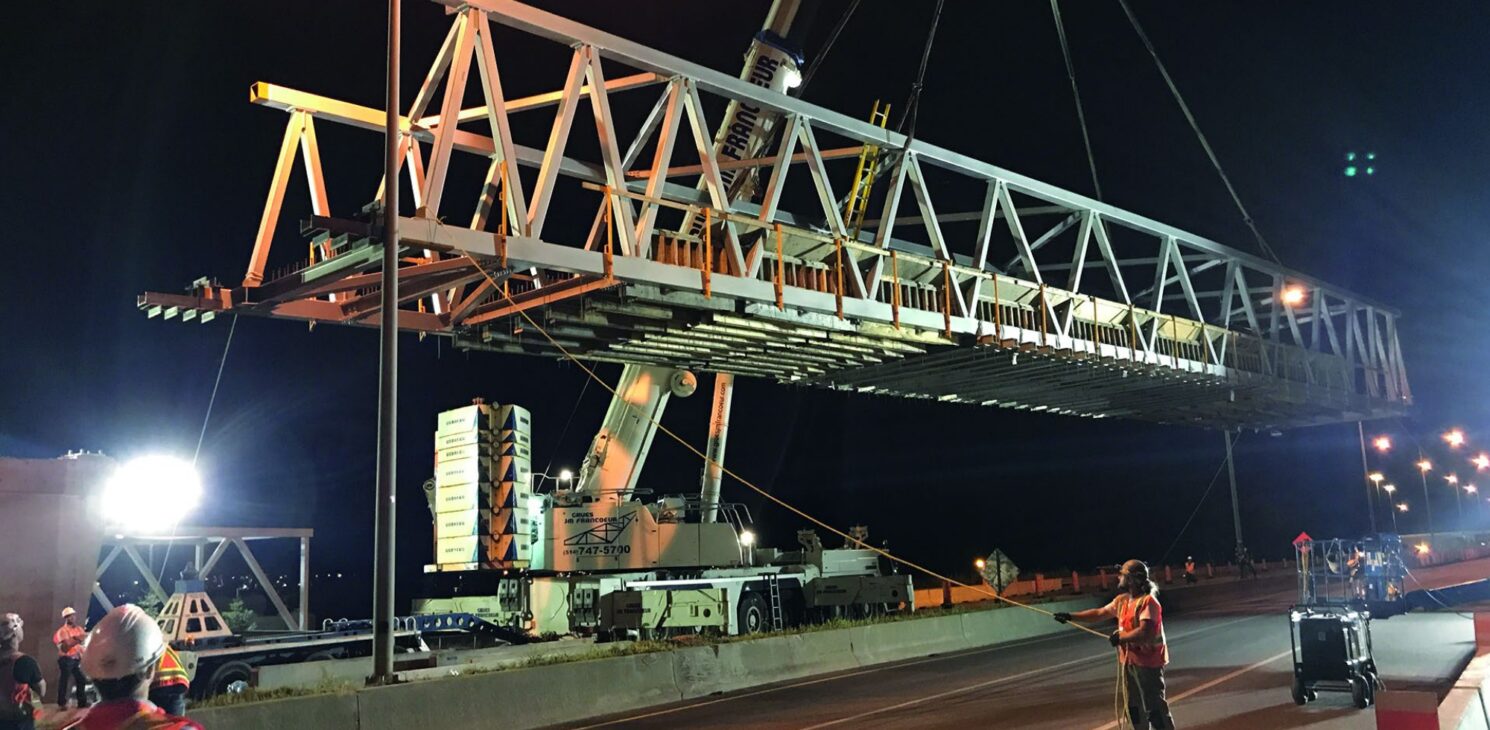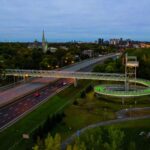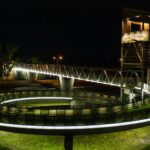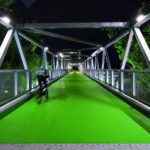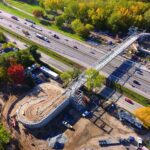The objective of the Normandy footbridge reconstruction project is to guarantee passage over Highway 20 and to restore access to the banks of the St. Lawrence River to its citizens.
Innovation and sustainable development are at the heart of the unique context in which the reconstruction of the Normandy footbridge takes place. The unique appearance of the walkway, the choice of innovative materials and the structural concepts used give the distinctive, intelligent, innovative and sustainable character desired by the customer.
The project revitalizes this residential space and helps restore its family and recreational vocation, where all generations can benefit from a safe and unifying living environment. The footbridge is also part of the bike path linking the cities of Oka and Mont-Saint-Hilaire, and helps encourage active transportation, economic development and the quality of life of the region’s citizens. Finally, the three-storey belvedere on the north side gives users a gathering place with a unique view of the river and the city of Longueuil.
Proposed solution
The reconstruction was born from an architectural approach in which CIMA+ collaborated from the beginning in support of the architect of the firm Cardin Julien inc. The final concept includes a straight lower deck steel lattice walkway spanning the highway, a curved caisson approach on the Marie-Victorin Park side, an embankment approach retained using retained retained with retaining walls for Le Moyne Park, access staircase towers and a three-storey high belvedere.
The defined format of the structure is impressive, thus allowing maintenance and emergency vehicles to cross it: the width of the bridge has been set at 4.5 m and the structure has been designed according to the Canadian Highway Bridge Code (CAN/CSA-S6).
Environmental benefits
Sustainable development was at the heart of the principles set out for the realization of this project. The integrity of the environment was maintained throughout the construction. As a result, the footprints have been reduced as much as possible and measures have been taken to ensure that the trees on the site are preserved as much as possible. As the work on both shores was carried out in public parks, it was crucial to respect the immediate environment. A revitalization of Le Moyne Park, on the southern approach, and a revegetation of the approaches have also been planned.
Particular attention was paid to the choice of materials used for the construction of the footbridge. For the sake of economy and environmental responsibility, the concrete from the old footbridge was used for the new structure. Indeed, the concrete was crushed and reused in the new embankments. In addition, for the cladding of the gazebo, torrefied wood, a durable material, was chosen and for the architectural lighting of the walkway, LED bulbs, less energy-consuming and more durable than traditional bulbs, were used.
